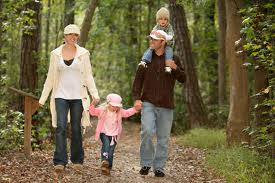So, you cleaned for Passover, and are making or about to make or attend a great
Seder (or two seders). So what do you do, in what is known as Chol ha Moed, the
Intermediate Days of Passover? Is there anything left to do before the final
part of the holiday, starting on Sunday night, than to eat matzah? And what is
the purpose of these “Intermediate Days”?
Even though, according to Jewish law, we are allowed to do things on the Intermediate days that are not allowed during the holidays themselves, such as driving or lighting a fire, these days are “mini-holidays” and should be special. It is a good idea to make the most out of these days by dressing a bit fancier than usual, and having a nice meal every day with meat and wine (and of course, matzah!).
The Intermediate Days are a great time for family. Try inviting friends over or distant relatives you haven’t seen in a while. It is a good time to go to the park or the zoo with your little ones, or to that exhibit at the museum you’ve been wanting to see for ages. Give your family that “Quality Time” you’ve been reserving for a holiday. Read with young children, take walks, or hire a babysitter and go out on a “date” with your spouse.
Passover has been called “The Festival of Freedom”. This applies not only to the holidays of Passover, but to the Intermediate Days as well. These days are a good time to reflect on how you’ve been spending your time, and to think about how to release yourself from those things that drag you down. Are you often feeling excessive stress? Is your boss giving your trouble? Do you often have negative thoughts or feelings of defeatism? Use the power of these days to think about how you can free yourself from all Pharaohs, both internal and external.
Even though, according to Jewish law, we are allowed to do things on the Intermediate days that are not allowed during the holidays themselves, such as driving or lighting a fire, these days are “mini-holidays” and should be special. It is a good idea to make the most out of these days by dressing a bit fancier than usual, and having a nice meal every day with meat and wine (and of course, matzah!).
The Intermediate Days are a great time for family. Try inviting friends over or distant relatives you haven’t seen in a while. It is a good time to go to the park or the zoo with your little ones, or to that exhibit at the museum you’ve been wanting to see for ages. Give your family that “Quality Time” you’ve been reserving for a holiday. Read with young children, take walks, or hire a babysitter and go out on a “date” with your spouse.
Passover has been called “The Festival of Freedom”. This applies not only to the holidays of Passover, but to the Intermediate Days as well. These days are a good time to reflect on how you’ve been spending your time, and to think about how to release yourself from those things that drag you down. Are you often feeling excessive stress? Is your boss giving your trouble? Do you often have negative thoughts or feelings of defeatism? Use the power of these days to think about how you can free yourself from all Pharaohs, both internal and external.


